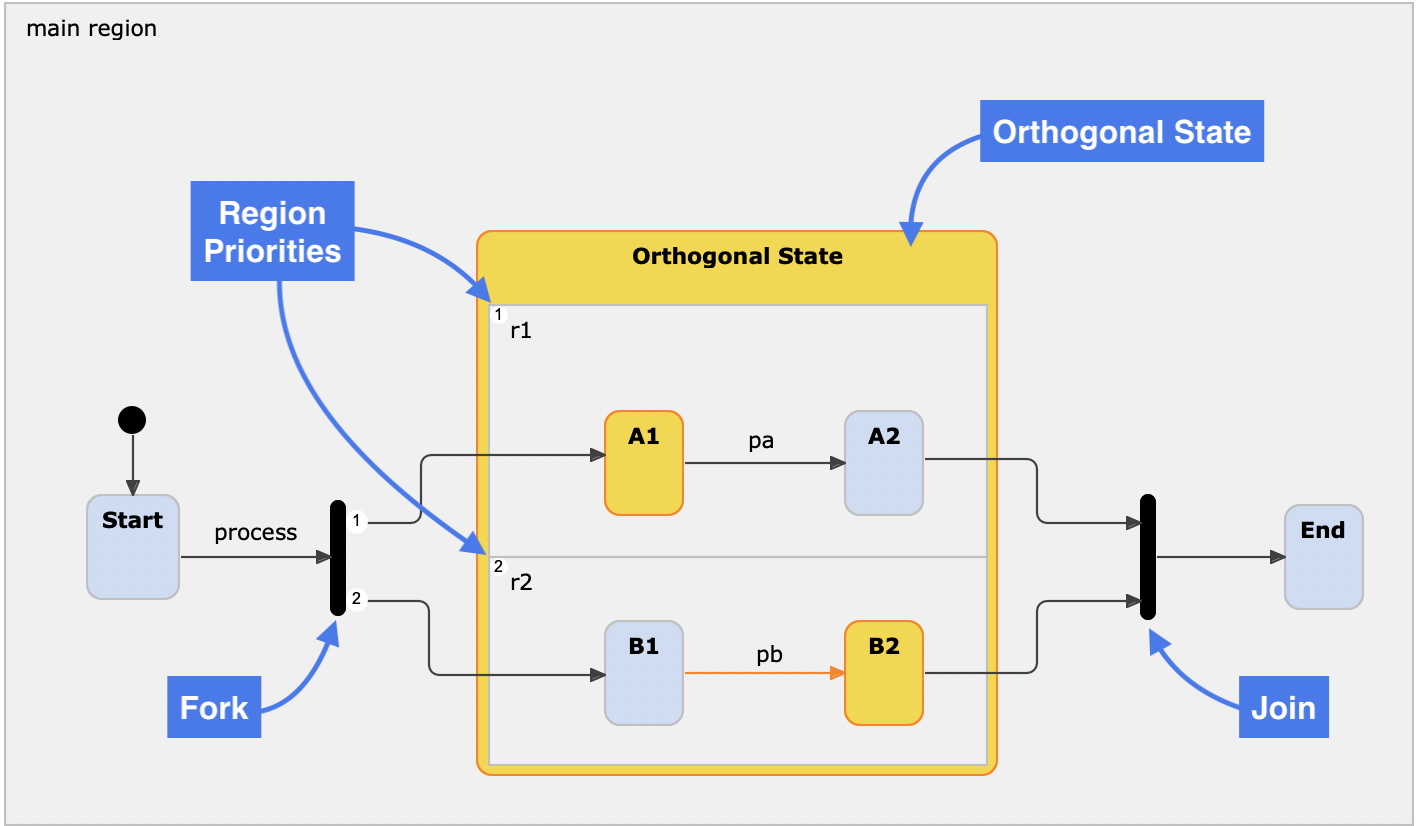Table of contents
Orthogonality Copy link to clipboard
itemis CREATE allows the user to specify orthogonal regions that are executed virtually concurrently. Orthogonal regions can be modeled either on top level, or within a composite state (or subdiagram). They allow to describe that the modeled system can be in multiple states simultaneously.
Orthogonal regions are executed in a deterministic sequential order and not in parallel as one might expect. The execution order is defined by the regions' priorities. These are indicated in the top left corner of a region. The defined execution order plays a particular role when orthogonal regions raise and react to the same events. For more details, see also chapter Raising and processing an event.

Synchronizations (forks and joins) Copy link to clipboard
Orthogonal regions can be defined on top level or within composite states. The semantics explained above are the same. The example model above uses a synchronization node to fork the execution flow into both orthogonal regions
r1 and
r2. After both regions have executed their state transitions, the execution flow is joined again by a synchronization node. A joining synchronization is only executed when all incoming transitions can be taken within the same run-to-completion cycle. Read more about synchronization nodes in the
language reference.